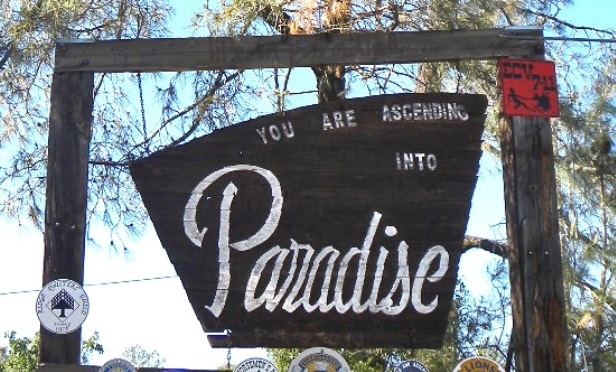 A sign welcomed visitors to Paradise prior to the devastating fire in November of last year.
A sign welcomed visitors to Paradise prior to the devastating fire in November of last year.
SACRAMENTO—Last year, the wildfires across the Golden State were devastating enough to result in the government declaring a state of emergency on August 4, technically the beginning of the fire season. Most would agree that the previously defined fire season between August and October is a misnomer. Rather, it is a year-round phenomenon, says Governor Gavin Newsom.
The Camp Fire, California's most devastating fire to date, killed 85 people, burned through more than 153,000 acres and destroyed 18,804 structures in and around Paradise, CA before finally being contained on November 25, 2018. The Woolsey Fire in Los Angeles and Ventura counties, which ironically started on the same day as the Camp Fire (November 8), destroyed more than 1,500 structures and claimed three lives, according to the National Interagency Fire Center.
The Tubbs Fire in Sonoma and Napa counties in 2017 was previously ranked as the most devastating California wildfire, claiming more than 5,600 structures and 22 lives.
Visit California reported that 11% of travelers reconsidered trips to California because of the wildfires, both due to road inaccessibility and poor air quality/visibility, costing the tourism industry about $20 million in August 2018. As a result, hotel investors may find fewer visitors to properties, which may affect bottom lines, especially in high-risk wildfire zones.
With regard to monetary damage, California is the most deeply affected wildfire state with an estimated economic impact of $85 billion, according to AccuWeather. These costs stem from tax revenues vis-à-vis affected businesses, tourism and federal wildfire-suppression costs. The reported costs also include $56 million in insured losses from the Mendocino Complex fire and $1.5 billion in Carr fire losses, as well as an outlay of $432 million by the California Department of Forestry and Fire Protection in July and August 2018 alone. The number is expected to climb as uncontained fires continue to wreak havoc along the West Coast, according to a DBRS report.
And, the biggest impact on the multifamily market is the predicted increased demand for housing for displaced residents whose homes were destroyed, according to DBRS. According to Compass Bay Area transaction data, 15% of all buyers purchased homes after the disaster due to losses sustained in the wildfires, with a median purchase price of $625,000.
“As major previous California wildfires have shown, such as the Oakland Hills Fire in 1991 and the Cedar Fire in San Diego in 2003, communities generally return to their pre-disaster conditions within a year or two following the incidents and market activity lines up with longer-term trends in those respective counties,” Selma Hepp, chief economist and vice president of business intelligence at Compass tells GlobeSt.com. “However, the impact of Camp Fire may be felt much longer in Butte County and surrounding areas as a larger share of housing stock was lost. Also, the lack of new construction due to labor, cleared land and lumber shortages that has crippled the industry over the last few years shows no signs of improvement.”
Other obstacles are compounding the already housing-burdened northern half of the state, says Hepp.
“Nevertheless, while the reality of wildfires in California remains, the bigger question facing both homeowners and renters is the overall quality of life,” she observes. “With expensive housing and increased commute times, budget-constrained households may choose to relocate and these trends are not only seen in Sonoma County but also in California's most expensive housing markets in the heart of Silicon Valley.”
© Touchpoint Markets, All Rights Reserved. Request academic re-use from www.copyright.com. All other uses, submit a request to [email protected]. For more inforrmation visit Asset & Logo Licensing.







